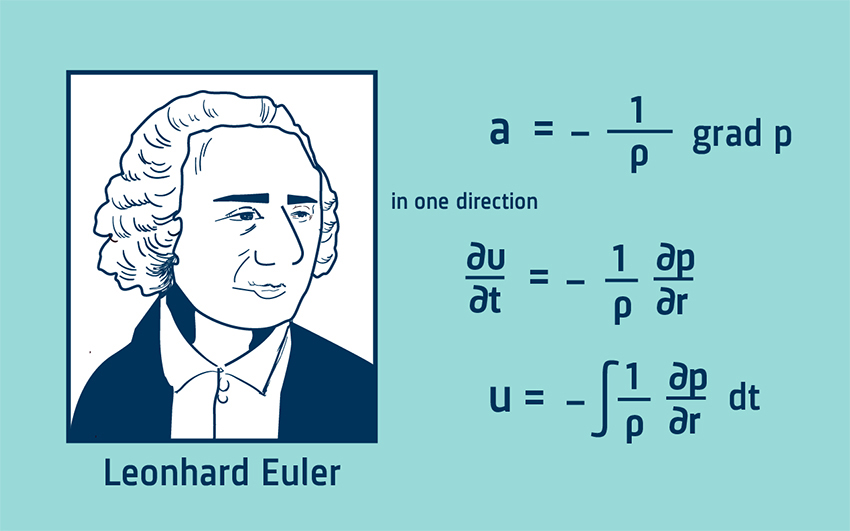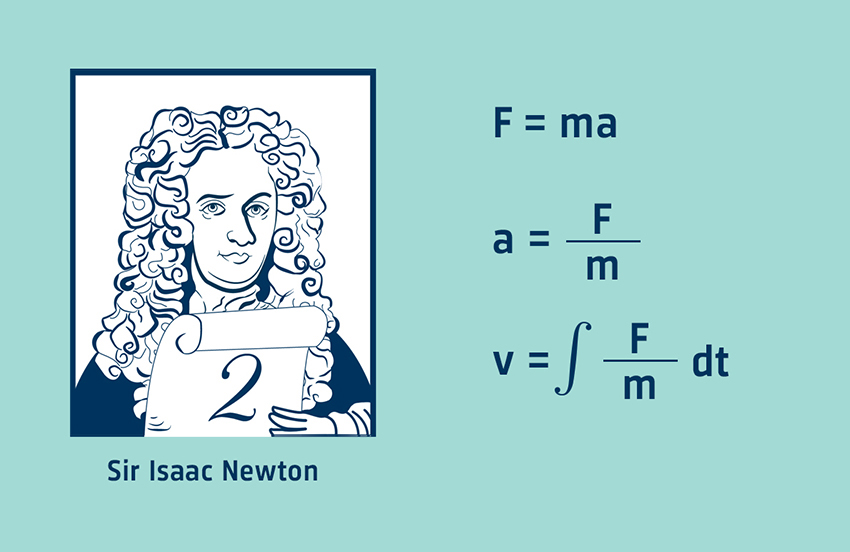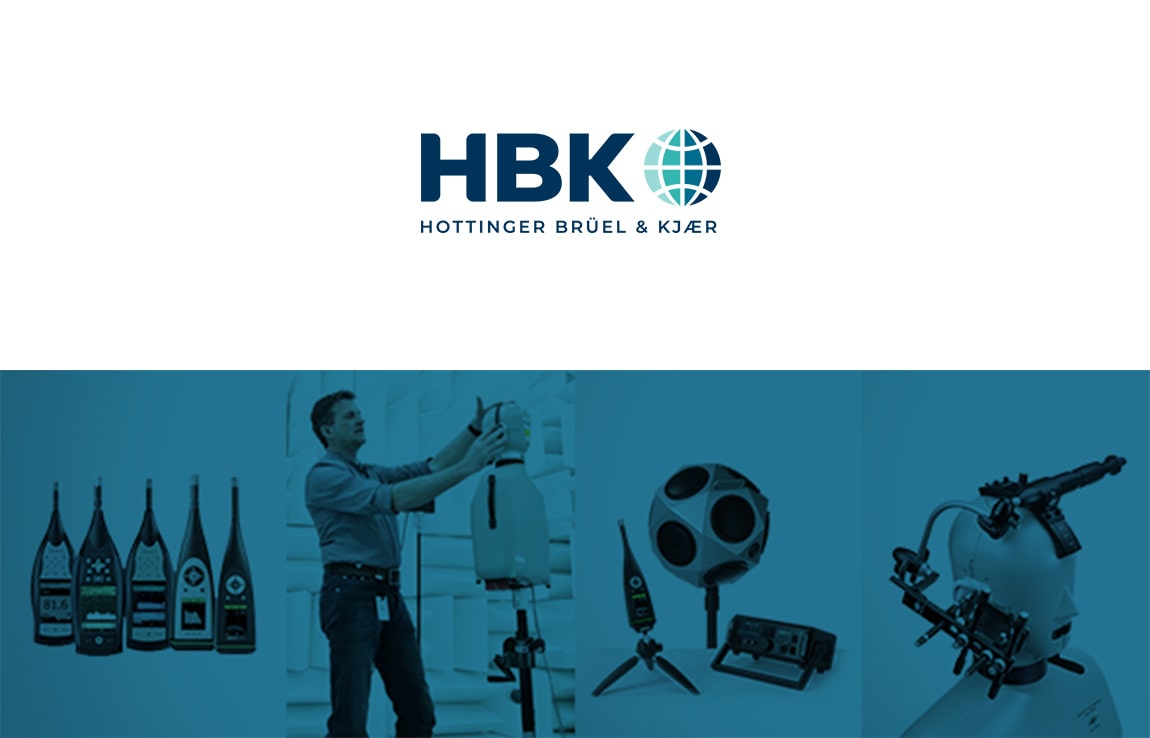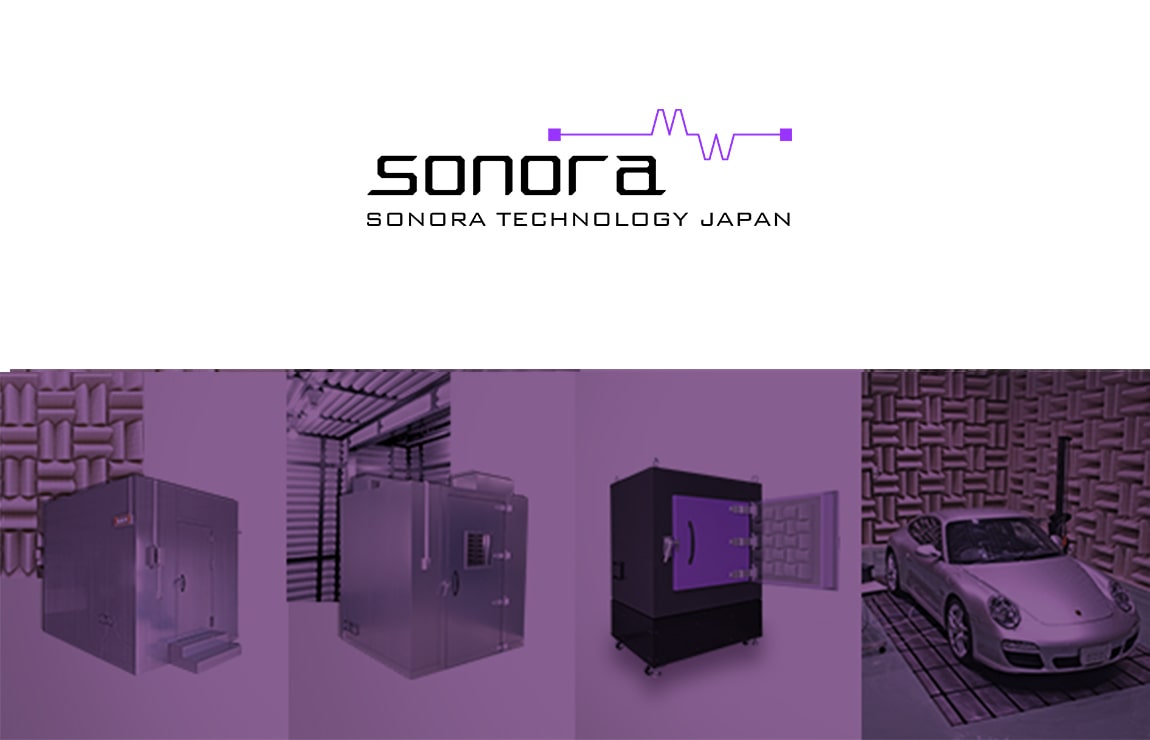Technical Column
Methods for Measuring Acoustic Intensity
May 26, 2025
- HBK × SONORA Acoustic Measurement Solution Official Website
- Technical Column
- Methods for Measuring Acoustic Intensity
Acoustic Power Measurement

Euler’s Equation
Acoustic intensity is defined as the time-averaged product of sound pressure and particle velocity.
While sound pressure can be relatively easily measured with a single microphone, direct measurement of particle velocity can be challenging.
However, particle velocity can be calculated using the pressure gradient (the spatial rate of change of pressure at a given moment) and the linearized Euler’s equation.
By measuring the pressure gradient with two closely spaced microphones, the particle velocity can be derived.
Euler’s equation is essentially an application of Newton’s Second Law in fluid mechanics.
Newton’s Second Law relates the force acting on a mass to its resulting acceleration.
If the force and mass are known, the acceleration can be determined, and by integrating acceleration over time, the velocity can be obtained.

In Euler’s equation, the acceleration of a fluid with density ρ is driven by the pressure gradient.
From the pressure gradient and the fluid density, the particle acceleration can be calculated.
By integrating this acceleration over time, the particle velocity can be obtained.

Finite Difference Approximation
The pressure gradient is a smoothly varying continuous function.
By taking the difference in sound pressure between two closely spaced microphones and dividing it by the distance between them, a linear approximation of the pressure gradient can be obtained.
This method is known as the finite difference approximation.
It is similar to drawing a straight line between two points on a circle to approximate the tangent at that point.
Calculation of Acoustic Intensity
To estimate particle velocity, the components of the pressure gradient must be integrated.
The particle velocity is evaluated at the midpoint between the two microphones, which represents the acoustic center of the probe.
The sound pressure at this point is approximated by averaging the pressures measured by the two microphones.
Finally, the acoustic intensity is calculated by multiplying the sound pressure and particle velocity signals and taking their time average.

An acoustic intensity analysis system consists of a probe and an analyzer.
The probe simply measures the sound pressure at two points using two microphones.
The analyzer performs the necessary integrations and calculations to determine the acoustic intensity.
Latest Posts in Technical Column
-

2025.12.11
The Geometry of Acoustic Design — How Chamber Shape Defines Sound Field Performance -

2025.12.06
Integrated Design of Anechoic Chambers with Auxiliary Equipment — Balancing Silence and Functionality — -

2025.11.30
Modular Semi-Anechoic Chambers — A Flexible Solution for Deployable Acoustic Testing — -

2025.11.25
Measuring Silence: How Anechoic Chambers Support Industrial Quality -

2025.11.18
Designing for Reproducibility — Environmental Stabilization in Acoustic Measurement — -

2025.11.13
The New Generation of Mobile Acoustic Measurement — Field Accuracy for Building and Environmental Sound Testing — -

2025.11.07
The Design Logic Behind the Inverse Square Law Zone in Anechoic Chambers -

2025.10.31
Acoustic Cameras and Anechoic Chambers — Visualizing Silence for Sound Source Analysis — -

2025.10.25
Integrated Acoustic and Vibration Analysis — Designing the Data Flow That Connects Measurement and Insight— -

2025.10.20
End-of-Line Acoustic Testing — Quantifying Quietness in Mass Production —

Contact Us
- Contact us by email
-
- Contact us by phone
-
Moritani Shokai
(Machinery Department No. 2, Tokyo Head Office)
Introduction of the Manufacturer
-

Hottinger Bruel & Kjaer
HHBK is a merger of two companies: Brüel & Kjær of Denmark and HBM of Germany.
Brüel & Kjær is one of the world’s leading manufacturers of acoustic and vibration measurement instruments, known as a total measurement chain supplier.Learn more about HBK
-

Sonora Technology Co., Ltd.
Sonora Technology is a leading Japanese manufacturer of industrial anechoic chambers and anechoic boxes.
From design and manufacturing to installation and acoustic performance assurance, Sonora provides fully integrated solutions to build complete acoustic measurement environments from the ground up.Learn more about Sonora

Contact / Request Brochure
For inquiries or consultations regarding the total solutions provided by HBK × Sonora, please feel free to contact us using the Contact button.
If you would like a brochure sent by mail, please use the Request Brochure button.